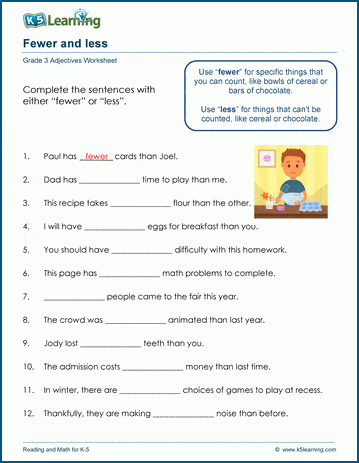Many students mix up ‘fewer’ or ‘less’, ‘good’ or ‘better’, and ‘more’ or ‘many’. These are adjectives that are commonly confused when comparing items.
Fewer or less
When talking about the amount of something, students need to decide if the item compared is one thing or a group of many things.
If it’s a group of smaller things, students should use ‘fewer’.
For example: Paul has fewer cards than Joel. Cards is a group of items.
If it’s one thing, students should use ‘less’.
For example: The crowd was less excited than last year. Crowd is one thing.
Good or better
Again, students need to consider the amount of things when considering using ‘good’ or ‘better’.
To compare two things, students should use ‘better’.
For example: Phil has a better truck than Karl.
To describe one thing, students should use ‘good’.
For example: You have a good teacher.
More or many
In the use of more or many, students should consider if the items can be counted or not.
If the items can be counted, students should use ‘many’.
For example: There are many questions on the quiz.
If the item cannot be counted, students should use ‘more’.
For example: The quiz takes more time to complete when you are careful.
Comparing with adjectives worksheets
In our grade 3 grammar section we have a section to help students practice adjectives for comparing items.


